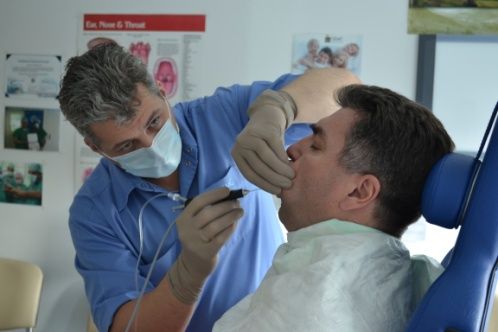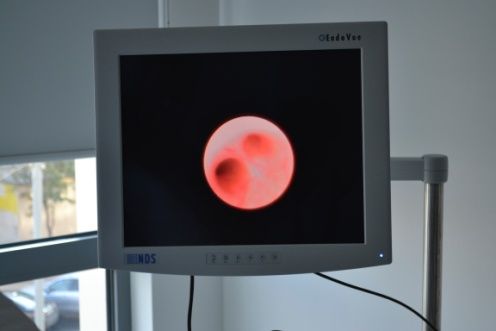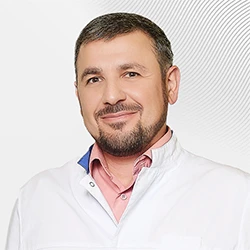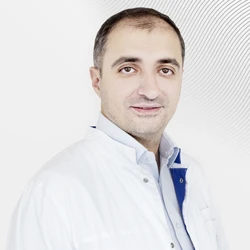Sialolithiasis: the stumbling block is in the salivary gland
Tells Roman Kartashov, maxillofacial surgeon
Few people know that stones occur not only in the kidneys and gall bladder, but also in the salivary glands. Meanwhile, this is one of the most frequent cases in the practice of a maxillofacial surgeon. A few years ago, the main treatment for salivary stone disease was removal of the gland, a risky operation that could lead to facial nerve paresis and other unpleasant consequences. Fortunately, a much less traumatic treatment method has appeared today – sialoscopy.
Often, patients learn about a stone in the salivary gland only in the doctor's office, where they complain of severe pain when swallowing, radiating into the ear or temple, with swelling on the face and neck. In rare cases, concretions are found accidentally during X-ray examination.
A stone located in the duct of the salivary gland prevents the normal outflow of saliva and can completely close the duct. Microorganisms accumulate in the "blocked" salivary gland and inflammation develops, accompanied by severe pain and sometimes manifestations of general intoxication – subfebrile fever, malaise, headache. This condition is called "salivary colic."
Causes of sialolithiasis
The exact causes of sialolithiasis, the formation of deposits in the salivary glands, have not yet been established. Presumably, calcium metabolism disorders and vitamin A deficiency are risk factors. Salivary stone disease is more common in men. Sialolithiasis is mainly found in people aged 25 to 40 years, much less often in children. The submandibular gland is most often affected, less often the parotid gland, and very rarely the sublingual gland. The size of the stones varies from a few millimeters to several centimeters.Diagnosis of sialolithiasis
Ultrasound, X-ray, CT or MRI are used for diagnosis. First of all, conservative therapy is prescribed in the form of treatment with antibiotics, drugs that stimulate saliva production and anti-inflammatory drugs. But in 40% of cases, the therapy has no effect. Repeated inflammation often occurs, and the process can become chronic. In such cases, surgery is the only treatment that eliminates the root cause of the inflammation.
Treatment of sialolithiasis
Until recently, to get rid of stones in the salivary gland, it had to be removed. The main risk during surgery on the salivary glands is due to the fact that the facial, lingual and hyoid nerves pass in the immediate vicinity of them.
Injury to the branches of the facial nerve is fraught with a gross violation of facial expressions, damage to the lingual and hyoid nerves can lead to loss of sensitivity and speech disorders. In addition, there is a risk of damage to the large vessels of the face and neck.
Other possible complications include Frey's syndrome – burning pains and inflammation in the temporal and parotid regions, salivary fistulas, dry mouth, numbness along the route of the large ear nerve, infections. Even if the risks are minimized in the hands of an experienced surgeon, unpleasant consequences remain in the form of a scar on the neck and general complications after surgery.
In addition, radical removal of the salivary gland may subsequently be accompanied by xerostomia - insufficient salivation, impaired oral microflora, accelerated tooth decay. The salivary glands are an important organ of the human digestive system.Saliva performs numerous functions – it neutralizes bacteria in the oral cavity, maintains an optimal environment, cleanses the mucous membrane and teeth from plaque, softens food, preparing it for digestion in the stomach.Sialoendoscopy is a modern effective treatment method


Despite the informative nature and high efficiency of the technique, due to the high cost of equipment, sialoscopy is still not very common in Russia. In Moscow, this procedure is performed only in three or four large clinics. EMC maxillofacial surgeons have been successfully practicing sialoscopy for several years.
"Previously, the presence of a stone in the intragastric part of the duct was an indication for the removal of the gland in the vast majority of cases. Now we have the opportunity to preserve the organ and, most importantly, selectively eliminate the cause of the disease," says maxillofacial surgeon Roman Kartashov. – Sialoscopy is performed not only for salivary stone disease, but for any pathological processes in the salivary glands. Unfortunately, not all patients are aware of modern treatment options and continue to relieve inflammation with drugs, fearing surgery. Sialoscopy is an opportunity to quickly make a diagnosis, carry out treatment in one step and forget about the problem forever. "
Why the EMC
The first and only clinic in Russia, created in the image of the world's leading clinics
EMC is a multidisciplinary center offering patients a high level of medical services and a personalized approach
Worldwide recognition and awards
 Learn more
Learn more
Worldwide recognition and awards
 Certificates and licenses
Certificates and licenses
Make an appointment for a consultation
Specify your contacts and we will contact you to clarify the details
Reviews
and new products of the EMC








.webp)




.webp)

